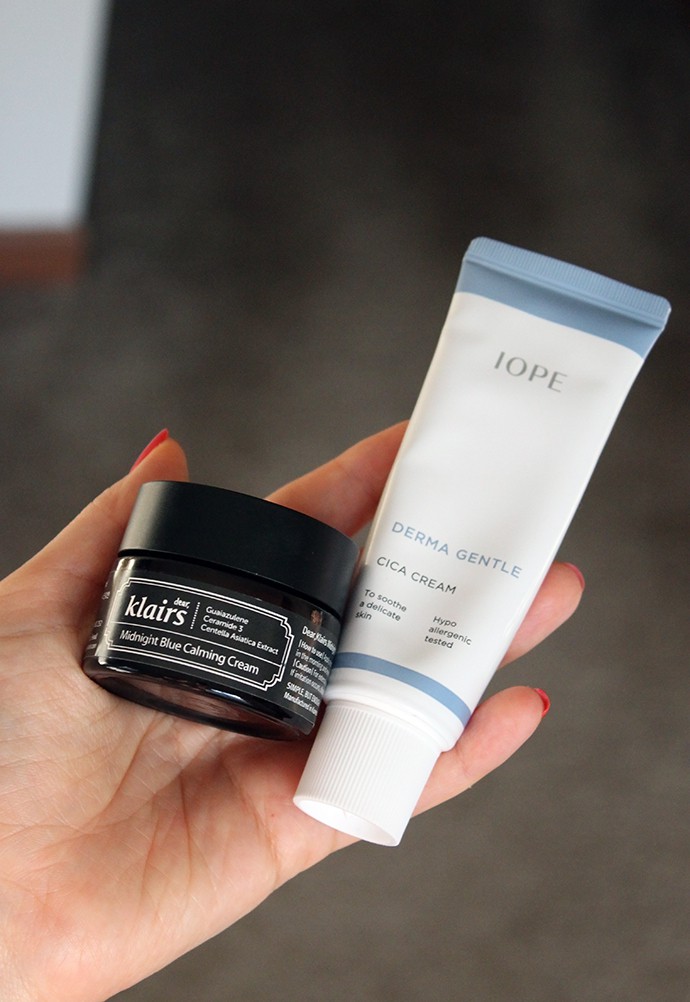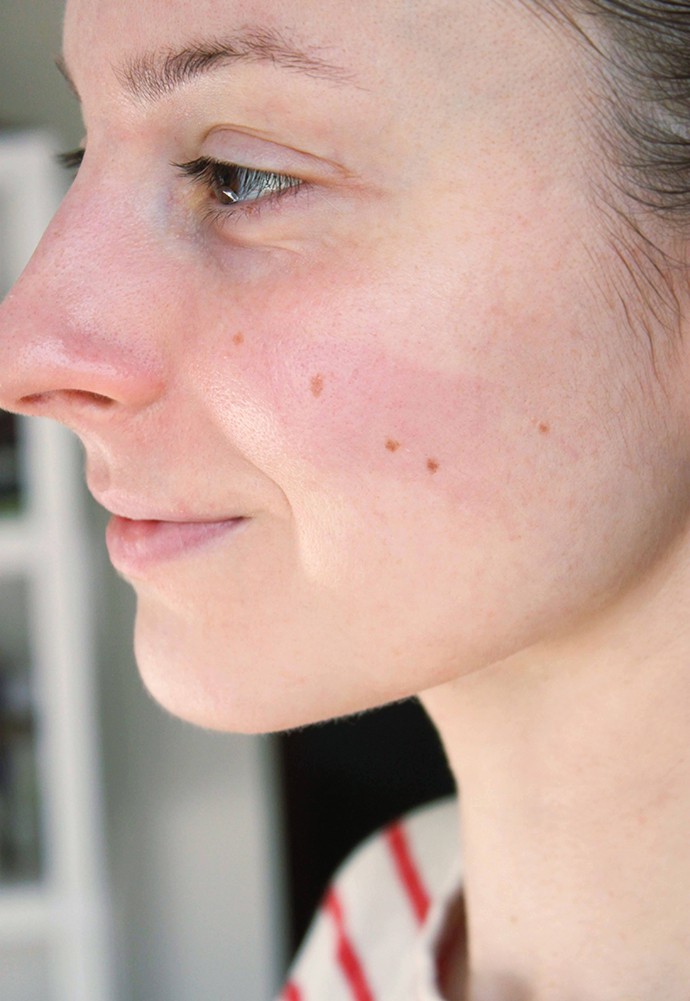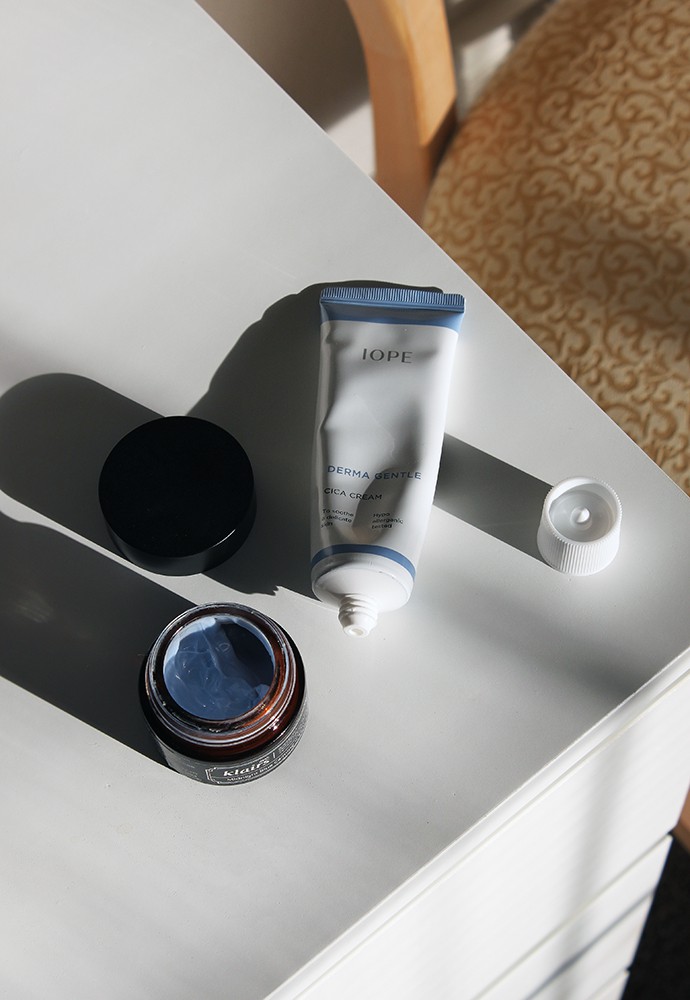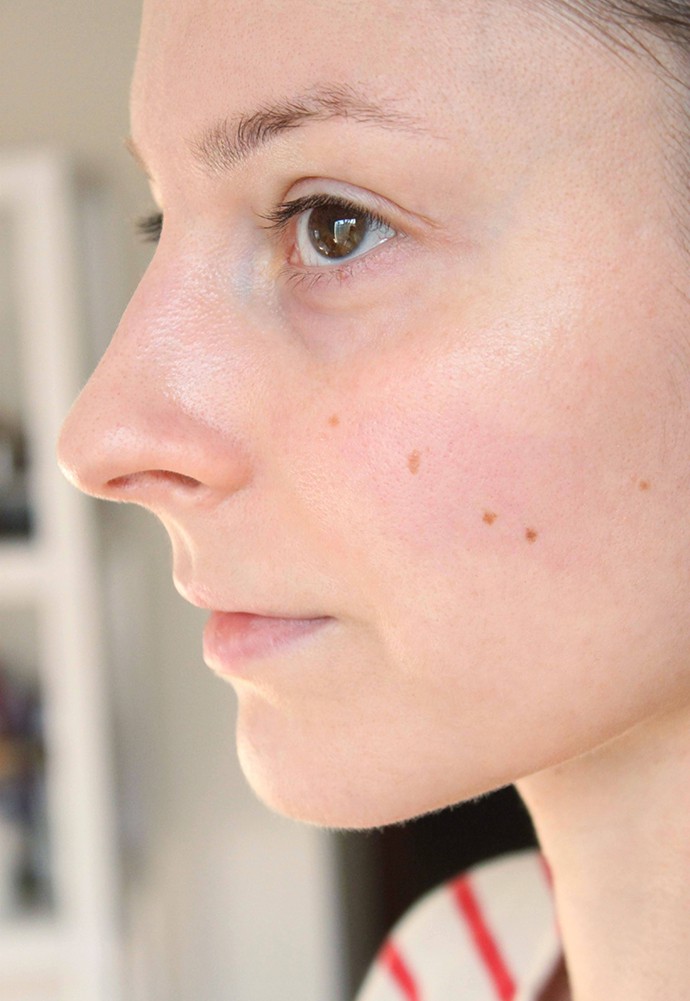Just Because a Product is Natural Doesn’t Mean It’s Safe
A couple of weeks ago I shared my bad skin reaction pictures on Instagram stories, and several of you asked for more details. I told you that I’d write a blog post about this experience and the two products that helped me recover from this skincare experiment gone wrong.
About 5 minutes after the initial application.
WHAT HAPPENED:
Long story short, I received a PR package or bestsellers from a small natural beauty brand and was so excited to try everything right away that I completely ignored a very important first step of product testing: always trying on the wrist first. That was a rookie mistake that could have cost me dearly if I hadn’t been proactive about my countermeasures.
For the first 5 minutes after the application, my skin didn’t feel any different, but soon after it started feeling warm and then hot. I looked in the mirror and saw a long red stripe across my cheek, right where I first applied the blob of cream before spreading it all over my face. I immediately rushed to the bathroom to wash it off with soap and water. Normally I would advocate against harsh cleansers, but this is the only instance where using one is justified. I didn’t know what was happening, it could be an allergic reaction or a chemical burn. By the way, the skin in that area eventually turned blue like a light bruise and I saw little bubbles starting to form, which made me believe I just sustained a chemical burn after all. I also had no symptoms of an allergic reaction, the damage was fully contained within the area of application.
Taking another look at the formula, I couldn’t pinpoint any ingredients that could have caused my skin to react that way. On paper, it’s just your basic daily moisturizer that doesn’t contain anything fancy. This makes me think that the product [or this batch specifically] wasn’t tested properly before being put on the market, the formula got contaminated during manufacturing, or perhaps the ingredients are not in the concentrations listed on the label. Either way, I never featured this brand on my blog before, and this point never will.
WHAT I DID:
Even after washing off the product, my skin continued burning, and I could think of only two products in my stash that could soothe this.
One of them is Klairs Midnight Blue Oily Skin Calming Cream ($24.50 – on sale at YesStyle for $15!) that I purchased from Wishtrend. It used to be sold exclusively on their website, but now it’s available all over the place, including Amazon and even Walmart. The cream is formulated for people with rosacea and anyone struggling with irritation and sensitivities. The formula is packed with skin-soothing ingredients: Sodium Hyaluronate, fatty acids, Centella Asiatica and Shea Butter among the top 10 ingredients, as well as Guiazulene and a peptide complex toward the bottom. Guiazulene and Centella are two ingredients that I always reach for when my skin is struggling.
This cream is not meant to be used as a moisturizer, but rather as a topical treatment, so I applied it only on the worst areas – my cheek and nose.
Ingredients: Water, Cetyl Ethylhexanoate, Butylene Glycol, Glycerin, Sodium Hyaluronate, Caprylic/Capric Triglyceride, Centella Asiatica Extract, Sorbitan Stearate, Cetyl Alcohol, Butyrospermum Parkii (Shea) Butter, Argania Spinosa Kernel Oil, Simmondsia Chinensis (Jojoba) Seed Oil, Sorbitan Sesquioleate, Glyceryl Stearate, Stearic Acid, Portulaca Oleracea Extract, Anthemis Nobilis Flower Extract, Ceramide NP, Polysorbate 60, Candelilla Cera, Chlorphenesin, Tocopheryl Acetate, Xanthan Gum, Acrylates/C10-30 Alkyl Acrylate Crosspolymer, Morus Alba Root Extract, Tromethamine, Brassica Oleracea Italica (Broccoli) Extract, Guaiazulene, Acetyl Hexapeptide-8, Lecithin, Acetyl Glutamine, sh-Oligopeptide-1, sh-Oligopeptide-2, sh-Polypeptide-1, sh-Polypeptide-9, sh-Polypeptide-11, Bacillus/Soybean/Folic Acid Ferment Extract, Caprylyl Glycol, 1,2-Hexanediol.
Another product I used was IOPE Derma Repair CICA Cream ($27). I mentioned it on this blog and on my IG countless times and even got my friends hooked on it. I know this sounds like a bold claim, but this moisturizer is nothing short of miraculous. It’s so soothing and calming, and swiftly dealt with any topical inflammation I plopped it over. Unlike the Klairs treatment, this one can be used like a normal AM/PM moisturizer. It contains soothing Panthenol and Allantoin, as well as Madecassoside – a chemical compound that gives Centella Asiatica its wound-healing properties. I am in love with this moisturizer, and Reddit is, too! I swear, not a day goes by when someone doesn’t rave about it either on SkincareAddiction or AsianBeauty subreddit – two places I can trust for solid science-backed skincare advice.
Ingredients: Water, Propanediol, Squalane, Cetearyl Alcohol, Polyglyceryl-3 Methylglucose Distearate, Butyrospermum Parkii (Shea) Butter, Caprylic/Capric Triglyceride, Chamaecyparis Obtusa Leaf Extract, Panthenol, Allantoin, Madecassoside, Glyceryl Stearate, Glyceryl Caprylate, Di-C12-13 Alkyl Malate, Butylene Glycol, Stearic Acid, Ethylhexylglycerin, Hydrogenated Lecithin, Hydroxyethyl Acrylate/Sodium Acryloyldimethyl Taurate Copolymer, Hydroxypropyl Starch Phosphate, Sorbitan Isostearate, Disodium Edta.
After washing off the product and treating the skin with soothing ointments, the irritation finally subsided.
After calming down my skin, I finally did what I was supposed to do all along – a patch test. The result was the same: skin felt normal for about 5-7 minutes, then turned red, and then blue. At that point, I didn’t want to see if it’s going to escalate into blisters, so I washed off the area with soap and applied both products on top. I hope this post serves as a friendly reminder to always patch test any new skincare products on your wrist first before putting anything on your face. Don’t get cocky just because it hasn’t happened in a while – or ever – one day it might.
Do you patch test your skincare before using it on your face? What are your favorite treatments to soothe irritation?







